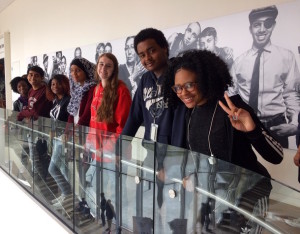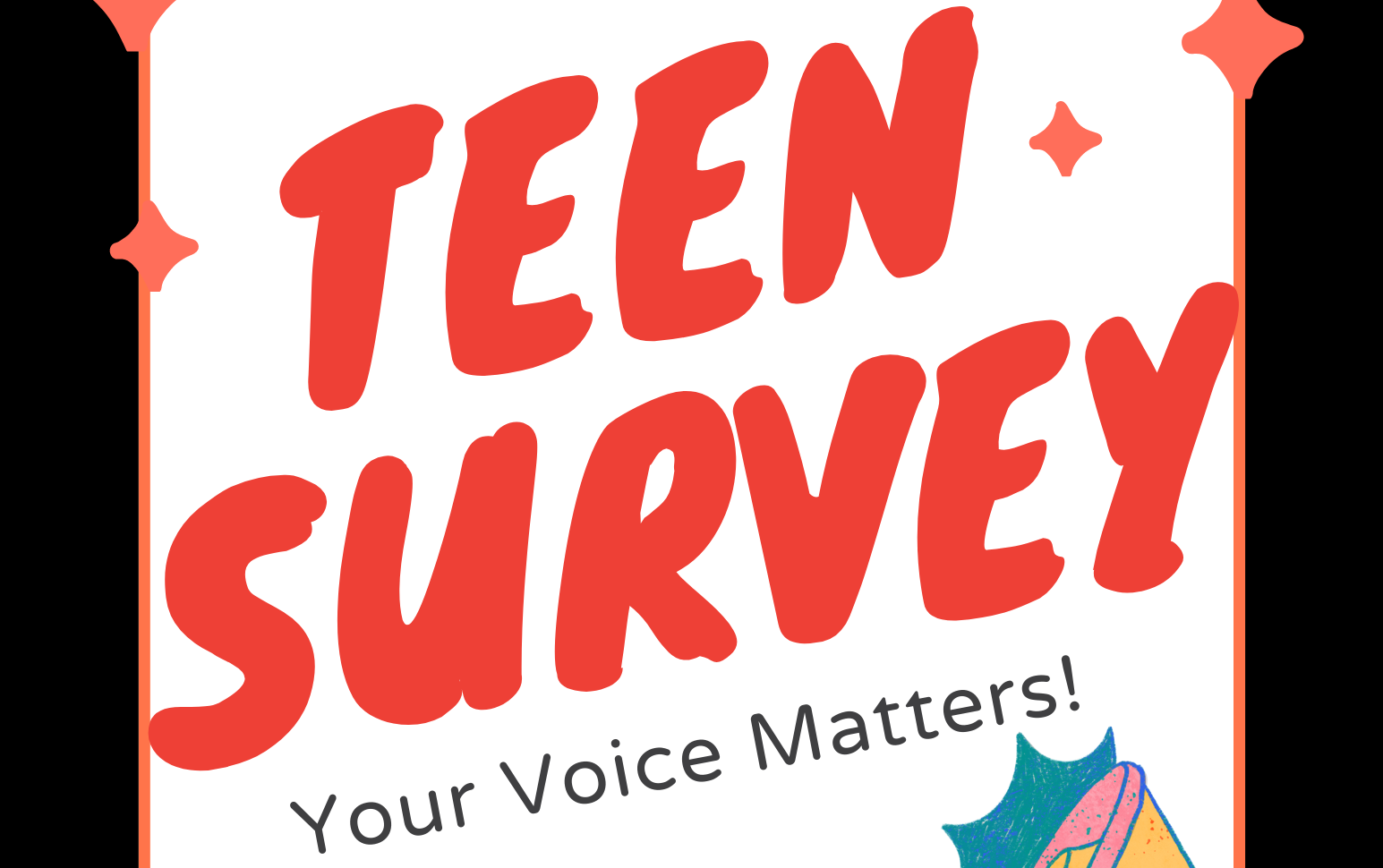Three Paideia School students (from left: Anna Claire, Alex and Katherine) offer their reactions to “The Color of Fear.”
By Alex Forbes
For me and most other minorities who watched “Color of Fear,” this movie hits us on a very deep level. When I first began watching the movie, I was afraid that it would make the white people in the room uncomfortable in a sense that they might feel as if they were being “ganged up” on by the minorities. Although I didn’t want white people to feel uncomfortable, I also wanted them to understand how hard it is to be a person of color in such an unforgiving world.
As we take more [Race, Class & Gender] classes and watch more movies throughout the year, I can sense the discomfort in the white people in the room when we talk about race. Some even say that they are afraid to say the wrong thing in class, in case they offend someone. I’m afraid some people may have different opinions than they are being taught to understand, but I also feel as if it is time to become more educated about what it feels like to be a minority. After this movie, I’m afraid that I will be looked at differently by white people. As Gordon (a character in the film) said: “It’s a system we consciously and unconsciously use to keep people of color down.”
I’m afraid that the system right now in junior high is that we judge minorities about what we are taught not to judge about. Almost always, I feel vulnerable and easy to expose as a minority, and I wish that the majority could understand how hard it is to be a person of color in America. I want the same as what David wants from white people. He states: “I cannot love you until you give me justice first.”
As a person of color, I’m extra careful when I am by myself, even when I want to ride my bike to the grocery store. I have to make sure that I don’t put things that I buy in my backpack after buying them, or else people might think I have stolen them. I have to constantly remind myself that I am not like other people, so I need to be aware of what people think of me.
“You block your own progress,” said David.
Victor followed by saying, “I think police limit me…white supremacy places limitations. But I don’t think I cause my own predicament.”
“Color of Fear” and other movies like it definitely have the potential to cause change. It is a matter of understanding different points of view and accepting the differences between races.
By Katherine Shue
I find the way David talks, the way he confronts issues, and everything about him, interesting. I feel that from the beginning, he can’t wrap his head around the idea that racism exists, and on top of that, he isn’t open to learning more about the issue. As one of the few white [people] in the meeting, I think his role is important because he represents his race: the oppressor. I am surprised how his plays it, though, because he says he doesn’t believe racism existed, but by saying this he is being racist.
In a way, his closed off mind is a good thing, because by refusing to understand or even acknowledge his cohorts’ lives, he is forcing them to go further into the issue and make their experiences understood. They go beyond obvious racism and into the little things people do and say everyday that might not even be noticed.
At one point, David C. says, “The field is wide open, and each man can stand on his own…”
Victor responds by telling him, “You are not standing on your own ground; you’re standing on red ground! And that is what it means to be white: to say that you’re standing on your own ground when you’re standing on someone else’s.”
Here, Victor is actively teaching David C. about his own feelings and also letting loose some of his anger. I think that in order to fully grasp the idea of racism, anger and other strong emotions need to be shown and then released. People around you need to see what is going inside your head and need to be able to sympathize.
Just listening to the men at the conference helps me because, as a white person, it lets me know how choosing other words to use and acting in a different way can prevent hurting someone. For example, David says many times “you this:” “you blacks,” “you Latinos,” “you Japanese,” etc. When these words are used, a little part of each person in the room is offended. Many people in the room point this out and explain to him that he can’t group people and ignore their individuality. I can relate to this because some people brush off my individuality when they categorize me as just a girl who won’t like x and only likes y. Yes, I am a girl, but I don’t want my personality to be revolving around a definition someone else has made for an entire group.
It is essential that we acknowledge racism because many of the experiences in the documentary still happen today. Until we acknowledge it, we won’t be able to work on it and make it better. One problem I think has improved a little, but is still clearly there, is discrimination in schools. Victor talks about how his reading skills were categorized when he went to a predominately white school. “And I was put in the lowest reading group. And, I gathered very quickly that that was because I’m of African-American descent,” he said.
I see this happening currently, just on a bigger scale. There has been a lot of shootings in the past few years — a white person shooting an African American — but most, if not all, of the trials have found the white person innocent for no reason except the unspoken one: because he is white and the other is not. In both examples, there is an obvious, unfair issue. I think that talking about race like we do and the men in the documentary do is very important and might make a difference of how we treat people.
I believe this documentary will have an effect on how we treat people based on their race to a certain extent. Half of the people watching it will have the same mindset as David’s, but as Victor said, “Racism is essentially a white person problem.” It is up to them to make the right choices of how to use this film, and just because it is a small audience, it doesn’t mean nothing can happen because at least some people’s lives will change.
By Anna Claire Shuman
I thought “The Color of Fear” was a very interesting movie for many reasons, and it also brought up many questions. Usually during a race discussion, I feel uncomfortable to respond because I don’t want to be perceived as racist or say something wrong that could offend people. Watching these men, even the white man who hadn’t experienced racism firsthand, and how they were able to have such an open discussion about race really made me think that maybe I could join the discussion more.
I think a main issue in this movie was how David Christensen was unknowingly racist, and I think that mindset is going to come up multiple times in our [class discussions]. David grew up in a racist family with a closed mindset, and that made him a part of who he is. I think that when he started to talk about his upbringing, and how his father beat him if he was brave enough to challenge anything his father did, it didn’t justify what he had said, but it gave me an insight into why he did what he did. The racist-ness of David really showed the most when he talked about how he worked with “coloreds” and how he owned “artifacts” of American Indians. When David started to say things like “You’re putting up a dam and blocking yourself,” and “I’m white. I’m colored,” it showed how little he was willing to let himself be open to anything and how set he is in his mindset that he can’t even see when someone is calling him out.
I think the turning point of the whole film was when Victor asked David what it meant to be American and David started to show his true colors and how he never really, truly answered the question. “You have to throw away your ethnicity to be American…When we give up what we are to be American, we’re dying from it.” When Victor said this, it meant that he feels like America is not accepting of any other races, so much that he feels like he is dying from it.
When Yutaka and David Lee started to talk about model minorities, [it showed] how much strain that could put on people, and how it could make other minorities seem less than, or inferior to the other minorities. I think this also shows the struggles between other minorities and how they are portrayed by the dominant groups. This also started the subject of racism between minorities, and how much of it is brought on by the white media and how the minorities have always been competitive between each other, because being a minority, finding jobs and just navigating life is so much harder.
I think that our race discussions are going to be a lot more thoughtful than if we hadn’t watched this movie. I think that I will definitely have to be more careful with what I say in the class though, because our class, our school even, is mostly white.
Alex, Katherine and Anna are all eighth-grade students at The Paideia School in Atlanta.
Want to add your voice to the community dialogue about race? Join VOX on Dec. 10.
We welcome any Atlanta-area teen join us for free onDec. 10, 2-4 p.m., at The Center for Civil & Human Rights. Click here to RSVP.
We’ll have a poetry open mic, free food. Create art. Record video. Speak up!
You can also mail your original story, poetry or art to media@voxatl.org.
Check out our ongoing coverage about race through this semester’s VOX Investigates.




